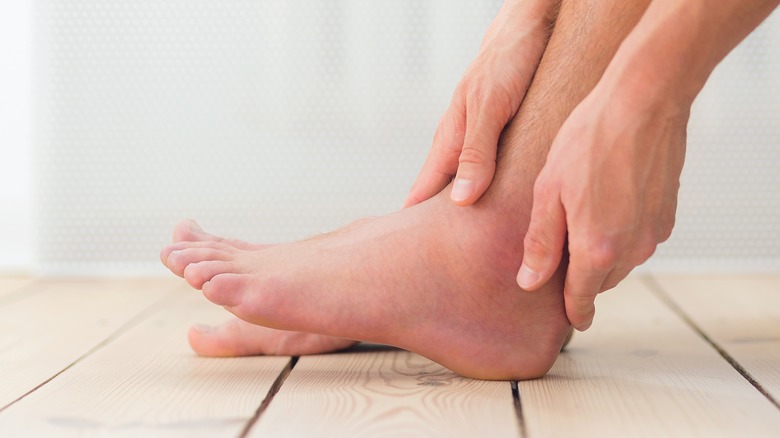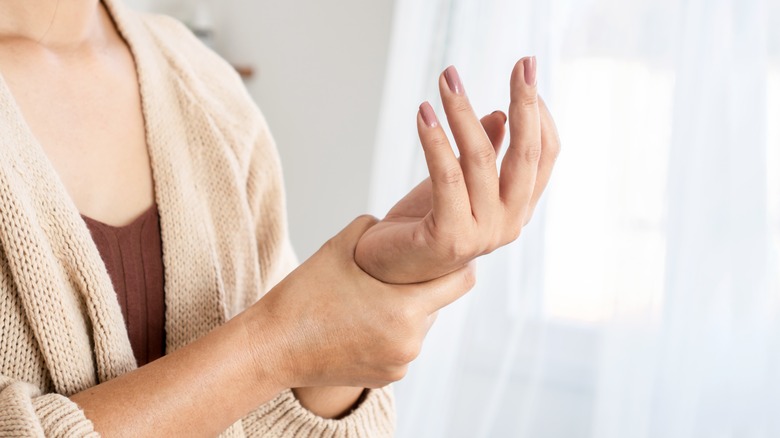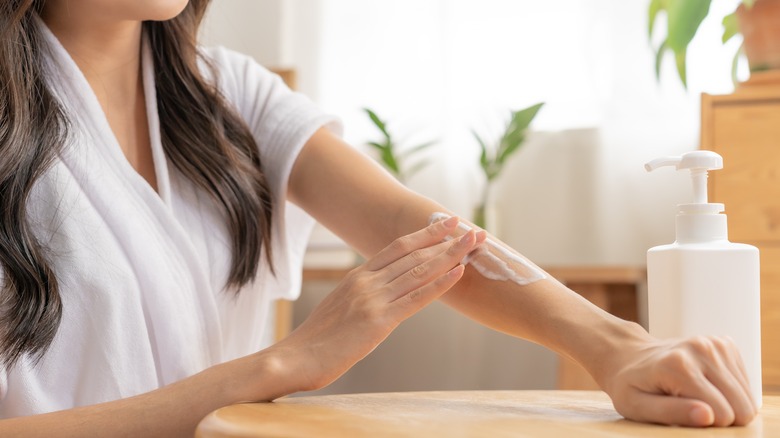How Can You Prevent Athlete's Foot On Your Hands?
Athlete's foot is a fungal infection usually found on the feet, as the name suggests. The medical term for athlete's foot is tinea pedis, and it is caused by a group of fungi known as dermatophytes, per the Mayo Clinic. The infection usually occurs between the toes, but it can also affect other areas of the foot, such as the sides. Athlete's foot can cause itching, burning, and stinging sensations in the affected area of the foot. Sometimes, the skin may also become red, dry, and flaky.
The condition is highly contagious and can be spread through contact with infected skin or surfaces, especially in moist environments where people are likely to walk barefoot (such as locker rooms, public pools, and communal showers). Although athlete's foot is more common in the feet, it can be equally irritating and uncomfortable when it affects the hands. When it occurs on the hands, this condition is termed tinea manuum, per Medical News Today.
Tips to prevent athlete's foot on your hands
Various measures are available to help prevent athlete's foot on your hands. One of the most effective ways to prevent athlete's foot on your hands is to practice good hygiene. Medical News Today advises keeping your hands dry and clean as much as possible.
You should also avoid touching any infected areas of your body (for instance, a foot where infection is present) with your hands. Indeed, it may be prudent to wear gloves if you need to touch infected skin, or if you need to touch any surfaces or items that are potentially contaminated. This is especially important for people who work in environments that expose them to potential sources of infection, such as healthcare workers, janitors, or gym staff. Additionally, do not share towels or other personal items with others. Following these recommendations can significantly reduce the risk of developing athlete's foot or other fungal infections on your hands.
How is athlete's foot on the hand treated?
The treatment options for athlete's foot depend on the infection's severity and the affected area's location. Mild athlete's foot cases can often be treated with over-the-counter antifungal creams — these products usually contain an active ingredient such as terbinafine that kills the fungi causing the infection, per a 2014 review published in the Cochrane Database of Systematic Reviews. Creams should be applied to the affected area as directed on the package to ensure the infection is fully cleared up.
Prescription-strength antifungal medications may be necessary in some cases. These may be topical or oral medications and are available by prescription from a healthcare provider. Topical prescription medications may include stronger versions of the over-the-counter creams or gels, such as fluconazole and itraconazole, per Medical News Today. It's important to note that athlete's foot can be difficult to treat and may recur even after successful treatment.



